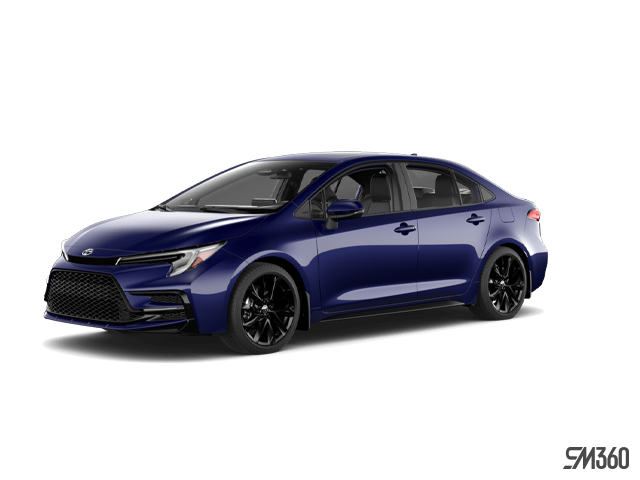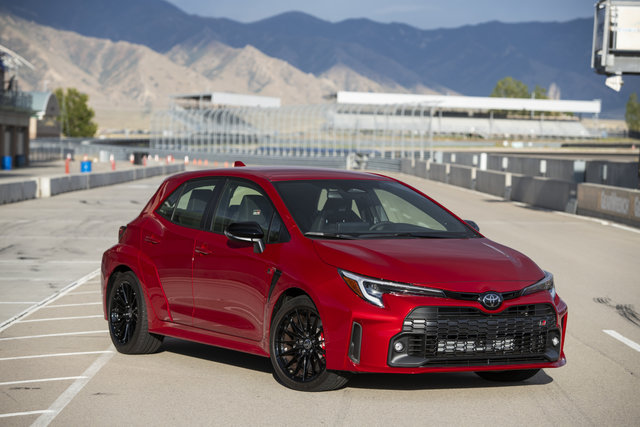If you're searching for a hot hatch that's equally ready for winter commutes and track-day fun,...

When shopping for a new vehicle in Ontario, advanced driver assistance systems have moved from optional extras to expected standard equipment. Toyota Safety Sense represents the company's approach to active safety technology—systems designed to support driver awareness and help reduce the potential for accidents. For 2026, most Toyota models come standard with Toyota Safety Sense 3.0, bringing together multiple technologies that work in the background to assist drivers on Mississauga streets and Ontario highways.
Understanding what these systems do—and when they activate—helps you make informed decisions about which vehicles match your driving needs and comfort level with technology assistance.
What Is Toyota Safety Sense?
Toyota Safety Sense is a bundle of active safety technologies that use cameras and radar to monitor the road ahead and around your vehicle. The system operates automatically in the background, activating only when specific conditions are met. It's not autonomous driving—you remain fully responsible for vehicle operation—but it provides an extra layer of support during moments when attention might be divided or reaction time matters.
The system is standard equipment on most 2026 Toyota models, not an optional package that requires additional payment. This means whether you're considering a Corolla for city commuting or a Highlander for family trips, these safety features come included.
Core Safety Technologies in Toyota Safety Sense 3.0
Pre-Collision System with Pedestrian Detection
The Pre-Collision System uses a combination of camera and radar to detect vehicles, pedestrians, bicyclists, and motorcyclists ahead of your vehicle. When the system determines that a collision may occur, it provides audible and visual warnings.
If you don't respond to the warnings—perhaps due to distraction or delayed reaction time—the system can apply automatic emergency braking to help reduce impact speed or, in some cases, avoid the collision entirely.
This feature particularly matters in Ontario urban environments where pedestrians, cyclists, and vehicles share congested roadways. The system operates under certain circumstances and has limitations based on speed, lighting, and other factors detailed in your owner's manual.
Full-Speed Range Dynamic Radar Cruise Control
Traditional cruise control maintains a set speed but requires you to manually brake when approaching slower traffic. Dynamic Radar Cruise Control (DRCC) adjusts your vehicle's speed to maintain a preset following distance from the vehicle ahead.
The system can be set at speeds above 32 km/h and uses vehicle-to-vehicle distance control. When the traffic ahead slows, your vehicle automatically reduces speed. When traffic clears, the system accelerates back to your preset speed.
For Ontario highway driving—particularly on the 401 through Mississauga or the QEW through the Greater Toronto Area—this reduces the constant speed adjustments needed in variable traffic flow.
Lane Departure Alert with Steering Assist
Lane Departure Alert monitors lane markings at speeds above 50 km/h. If the system detects that your vehicle is drifting out of its lane without the turn signal activated, it provides audible and visual warnings.
If you don't take corrective action, Steering Assist can provide gentle steering input to help guide the vehicle back toward the centre of the lane. This feature can help during moments of reduced attention or fatigue, particularly on long highway drives.
The system requires visible lane markings to function and may not operate in heavy rain, snow, or on unmarked roads common in rural Ontario areas.
Lane Tracing Assist

Lane Tracing Assist works in conjunction with Dynamic Radar Cruise Control to help keep your vehicle centred in its lane. The system provides gentle steering inputs when needed, reducing the constant minor corrections required during highway driving.
This feature activates only when DRCC is in use and lane markings are visible. It's designed to make highway cruising less tiring, not to enable hands-free driving. You must keep your hands on the steering wheel at all times.
Road Sign Assist
Road Sign Assist uses the forward-facing camera to recognize specific road signs including speed limit, stop, and yield signs. The system displays recognized signs on your multi-information display, serving as a reminder of current posted limits.
This feature can be helpful when entering new areas or when signs are obscured by weather or vegetation. However, the system may not detect all signs, and drivers remain responsible for observing and following all traffic signs.
Automatic High Beams
Automatic High Beams detect the headlights of oncoming vehicles and tail lights of vehicles ahead. When detected, the system automatically toggles from high beams to low beams, then back to high beams when the road clears.
The system operates at speeds above approximately 34 km/h. During winter driving in Ontario when rural roads may lack street lighting, this feature helps maintain visibility without manually managing high beam operation.
Proactive Driving Assist
Proactive Driving Assist uses the vehicle's camera and radar to provide gentle braking or steering support in specific situations. When system operating conditions are met, it can help maintain distance from preceding vehicles, pedestrians, or bicyclists.
The system can also provide gentle braking when entering curves. This is supportive technology—it doesn't prevent collisions on its own and doesn't replace attentive driving.
Additional Standard Safety Features
Beyond Toyota Safety Sense 3.0, most 2026 models include:
- Toyota Star Safety System: Vehicle Stability Control, Traction Control, Anti-lock Brakes, Electronic Brake-Force Distribution, and Brake Assist
- Blind Spot Monitor with Safe Exit Assist: Detects vehicles in adjacent lanes and warns occupants if a vehicle approaches when opening doors
- Rear Cross Traffic Alert: Warns of approaching vehicles when backing out of parking spaces
- Backup Camera: Provides rear view when shifting into reverse
- Multiple Airbags: Most models include 8-10 airbags positioned throughout the cabin
Key Takeaways
|
Toyota Safety Sense 3.0 Feature |
Primary Function |
|---|---|
|
Pre-Collision System |
Detects potential frontal collisions, provides warnings and automatic braking |
|
Dynamic Radar Cruise Control |
Maintains set speed and following distance in traffic |
|
Lane Departure Alert |
Warns if vehicle drifts from lane without turn signal |
|
Lane Tracing Assist |
Helps centre vehicle in lane during highway driving |
|
Road Sign Assist |
Displays recognized road signs on instrument panel |
|
Automatic High Beams |
Toggles high beams based on surrounding traffic |
|
Proactive Driving Assist |
Provides gentle braking and steering support in specific conditions |
Learn More at Erin Park Toyota
Toyota Safety Sense 3.0 brings together multiple technologies designed to support driver awareness and decision-making on Ontario roads. These systems come standard on most 2026 Toyota models, from compact sedans to full-size SUVs. Visit our team in Mississauga to learn how these features operate in real-world driving conditions and to experience them during a test drive.
Other Articles That May Interest You
When Ontario winter weather brings snow, ice, and temperatures that swing from above freezing to...
With only 30 units available for Canada, the 2026 Toyota GR86 Yuzu Edition stands out as one of...





